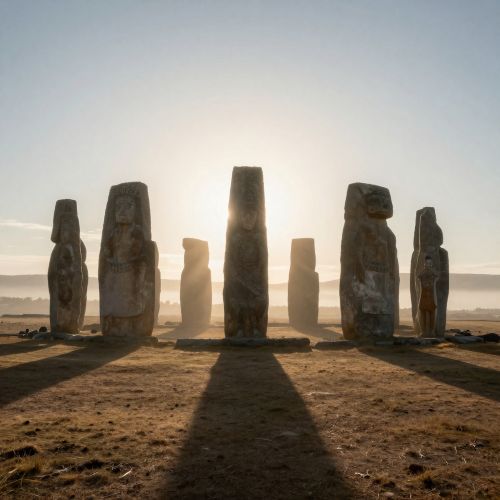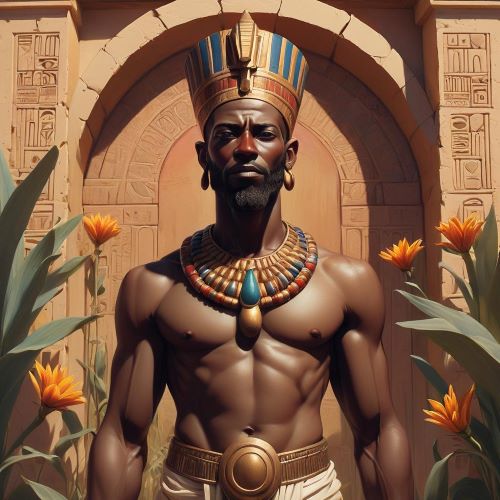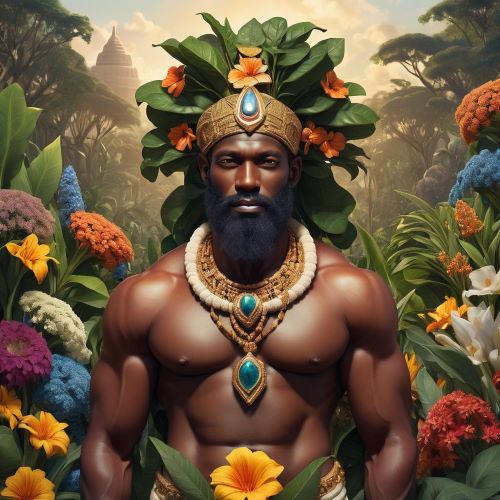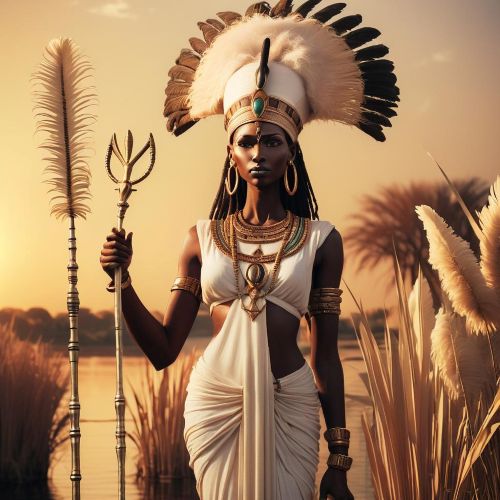Arensnuphis : God of Companionship
Listen
At a glance
| Description | |
|---|---|
| Origin | Nubian Mythology |
| Classification | Gods |
| Family Members | N/A |
| Region | Sudan, Egypt |
| Associated With | Protection, Companionship |
Arensnuphis
Introduction
Arensnuphis is a fascinating deity from the Kingdom of Kush, an ancient civilization located in what is now Sudan. Originally a god rooted deeply in Nubian belief systems, Arensnuphis eventually crossed cultural boundaries to find a place within the Egyptian pantheon, especially during the Graeco-Roman period. Known for his protective qualities and close connections to other powerful deities like Isis and Anhur, Arensnuphis symbolized strength, loyalty, and guardianship. His worship mainly centered around southern temples such as those at Philae and Thebes, highlighting the strong cultural exchanges between Nubia and Egypt during antiquity.
Physical Traits
Arensnuphis is visually striking, portrayed in ways that immediately emphasize his power and authority. Most commonly, he appears as a man wearing a tall, feathered crown, an adornment that associates him with divine rulership and cosmic forces. His iconography also includes him holding a spear, reinforcing his image as a warrior and a guardian. Sometimes he is shown standing dominantly on a crocodile, a symbol of subjugating chaos and danger. In other instances, Arensnuphis takes the form of a lion, a creature revered for its bravery and protective instincts, anchoring his fierce connection to both the wild landscape and the role of a vigilant defender.
Family
Although detailed stories about the family lineage of Arensnuphis are scarce, he is often mentioned alongside other significant deities in ways that hint at familial or partnership ties. He is sometimes paired with Sebiumeker, another Nubian lion deity, suggesting a brotherhood or a close alliance in their shared duties over protection, fertility, and warfare. His association with Isis further weaves him into the greater mythological fabric of both Nubian and Egyptian traditions, with some inscriptions portraying him as her trusted companion. Through these links, Arensnuphis was seamlessly integrated into religious ceremonies that emphasized divine guardianship and the nurturing of life.
Other names
Throughout history, Arensnuphis has been known by various names and titles that reflect his multifaceted nature. Among these, “Arsenuphis” and “Tabo” appear in different regions and periods, while some Egyptian inscriptions refer to him as “Iryhemesnefer,” meaning “The Good Companion.” This particular title highlights his role as a steadfast ally, particularly to the goddess Isis. The variations in his name across Nubian and Egyptian contexts point to the fluidity of ancient religious identities and showcase how his qualities resonated across different cultures, allowing Arensnuphis to be adapted and revered under many guises without losing his core attributes.
Powers and Abilities
The powers of Arensnuphis center around protection, fertility, and martial strength. As a guardian deity, he was called upon to shield hunters venturing into the dangerous deserts, safeguard crops from harm, and ensure the vitality of livestock—critical concerns for ancient Nubian communities. His spear, a recurring symbol in his depictions, embodied his capacity to defend the innocent and to strike down threats. Beyond his earthly protection, Arensnuphis had spiritual significance in afterlife rites, often invoked to guide souls safely into the next world. His connection to fertility rites and his supportive role alongside Isis expanded his reach into domains of growth, renewal, and cosmic balance.
In addition to its raw physical power, the Aigamuxa is said to have exceptional night vision, enabling it to stalk prey with precision in complete darkness. Some legends even attribute it with the ability to turn invisible, making it an even more elusive and terrifying force in the wilderness.
Modern Day Influence
While active worship of Arensnuphis faded with the decline of the Kingdom of Kush and the transformations of late antiquity, his presence has not been lost to time. Today, archaeological sites such as Philae, where inscriptions and temples dedicated to him still stand, offer critical insights into his role in ancient religious practices. Scholars have increasingly recognized Arensnuphis as a symbol of Nubian pride and cultural resilience, helping to reframe historical narratives that too often marginalized African civilizations. Modern exhibitions on ancient Nubia frequently highlight Arensnuphis, emphasizing the interconnectedness of African and Egyptian spiritual traditions and honoring his enduring legacy in the study of ancient religions.
Related Images
Source
Wilkinson, Richard H. The Complete Gods and Goddesses of Ancient Egypt. Thames & Hudson, 2003.
Fisher, Marjorie M., et al. Ancient Nubia: African Kingdoms on the Nile. American University in Cairo Press, 2012.
Ashby, Solange. Calling out to Isis: The Enduring Presence of Nubian Worshippers at Philae. 2020.
Shinnie, Peter L. Ancient Nubia. Routledge, 2014.
Joshua J. Mark. (2016). Egyptian Gods – The Complete List – World History Encyclopedia. https://www.worldhistory.org/article/885/egyptian-gods—the-complete-list/
Contributors to Wikimedia projects. (n.d.). Kushite religion – Wikipedia. https://en.wikipedia.org/wiki/Kushite_religion
Frequently Asked Questions
What is lorem Ipsum?
I am text block. Click edit button to change this text. Lorem ipsum dolor sit amet, consectetur adipiscing elit. Ut elit tellus, luctus nec ullamcorper mattis, pulvinar dapibus leo.
What is lorem Ipsum?
I am text block. Click edit button to change this text. Lorem ipsum dolor sit amet, consectetur adipiscing elit. Ut elit tellus, luctus nec ullamcorper mattis, pulvinar dapibus leo.
What is lorem Ipsum?
I am text block. Click edit button to change this text. Lorem ipsum dolor sit amet, consectetur adipiscing elit. Ut elit tellus, luctus nec ullamcorper mattis, pulvinar dapibus leo.
What is lorem Ipsum?
I am text block. Click edit button to change this text. Lorem ipsum dolor sit amet, consectetur adipiscing elit. Ut elit tellus, luctus nec ullamcorper mattis, pulvinar dapibus leo.
What is lorem Ipsum?
I am text block. Click edit button to change this text. Lorem ipsum dolor sit amet, consectetur adipiscing elit. Ut elit tellus, luctus nec ullamcorper mattis, pulvinar dapibus leo.











